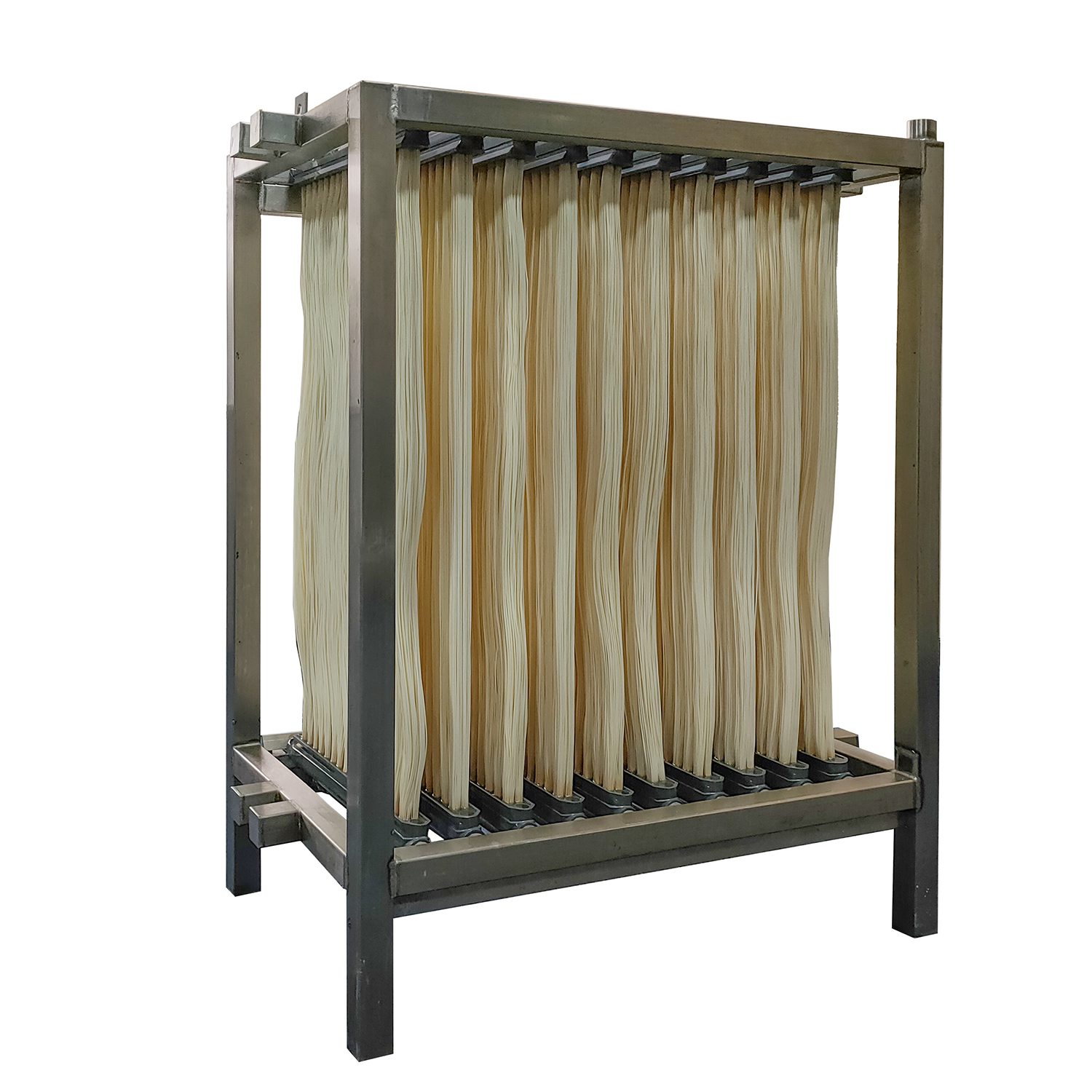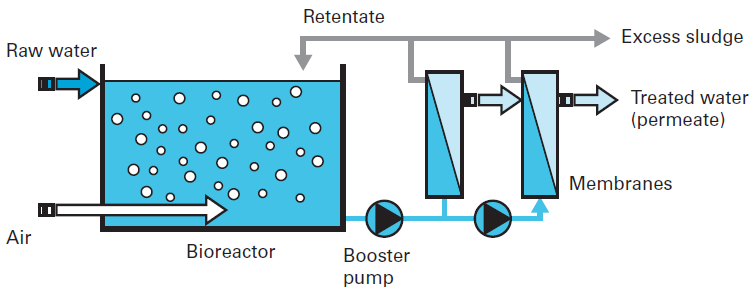Membrane Bioreactor Systems: A Key Technology for Water Reuse and Recycling
Membrane Bioreactor Systems: A Key Technology for Water Reuse and Recycling
Blog Article
Membrane Bioreactors Clarified: Effective Solutions for Clean Water
Membrane bioreactors (MBRs) have become a sophisticated remedy for addressing journalism difficulties of wastewater therapy. By integrating biological procedures with sophisticated membrane layer purification, MBRs not just improve the high quality of treated water however additionally minimize the spatial requirements of treatment centers. As ecological worries heighten, the duty of MBR technology in advertising sustainable water administration comes to be increasingly substantial. The intricacies of their procedure, advantages, and prospective applications merit a closer assessment to completely understand their influence on the future of water therapy.

What Are Membrane Bioreactors?
Membrane layer bioreactors (MBRs) are sophisticated wastewater therapy systems that combine organic destruction processes with membrane filtration technology. This assimilation permits for the effective elimination of contaminants from water, making MBRs a recommended option in various applications, including community wastewater therapy and commercial effluent administration.

One of the important benefits of MBRs is their ability to produce top notch effluent, often ideal for reuse in watering or industrial procedures. Additionally, MBRs require a smaller sized footprint contrasted to traditional treatment systems, making them excellent for city setups where area may be restricted.
Furthermore, MBRs can efficiently manage differing influent loads and are less susceptible to the results of harmful shocks. These features add to their expanding appeal as a lasting solution for addressing the raising demand for tidy water while minimizing environmental impacts.
Exactly How Membrane Layer Bioreactors Work
While the operation of membrane layer bioreactors (MBRs) might seem facility, it essentially rotates around the synergy in between biological processes and membrane filtering. MBRs incorporate a biological therapy process, commonly turned on sludge, with a membrane separation device to treat wastewater effectively.
In an MBR system, wastewater is very first introduced right into a bioreactor where microorganisms degrade raw material and various other pollutants. The biological activity minimizes the concentration of contaminants while advertising the development of biomass. Following this biological treatment, the mixed alcohol is subjected to membrane filtration, which can be microfiltration or ultrafiltration, relying on the wanted effluent high quality.
The membranes serve as a physical barrier, enabling water and tiny solutes to pass while maintaining put on hold solids and bigger molecules. This enables the system to keep a high focus of biomass within the activator, enhancing the therapy performance.
Moreover, the continual separation of treated water from the biomass promotes a small design and lessens the impact of the treatment facility. On the whole, the mix of organic destruction and membrane layer purification in MBRs results in dependable and efficient wastewater treatment, ensuring top quality effluent suitable for various applications.
Benefits of MBR Modern Technology
One of the key advantages of membrane layer bioreactor (MBR) technology is its ability to produce high-quality effluent with a dramatically reduced footprint compared to conventional wastewater treatment methods. MBR systems properly integrate organic therapy and membrane layer purification, resulting in remarkable elimination of pollutants, including suspended solids, pathogens, and organic matter. This ability brings about navigate here effluent that typically fulfills or exceeds strict regulatory requirements for reuse and discharge.
In addition, MBR modern technology enables greater biomass focus, which improves the therapy performance and lowers the required activator quantity. This compact layout is particularly helpful in urban locations where area is restricted. The operational flexibility of MBR systems also implies they can adjust to differing influent top qualities and flow rates, making them appropriate for a variety of applications.
In addition, the lowered sludge manufacturing related to MBR procedures adds to lower operational and maintenance expenses. The membranes function as a physical obstacle, lessening the danger of obstructing and enabling longer functional durations between cleaning. Overall, the advantages of MBR innovation make it an attractive solution for sustainable wastewater therapy, attending to both ecological worries and the demand for efficient resource monitoring.
Applications of Membrane Layer Bioreactors
With their versatility and performance, membrane bioreactors (MBRs) locate applications across various industries, including local wastewater treatment, industrial procedures, and also water reclamation. In municipal settings, MBRs give a portable option for treating wastewater, properly getting rid of impurities while at the same time generating premium effluent that meets strict governing standards. This makes them specifically ideal for areas with restricted room.
In industrial applications, MBR modern technology is made use of for treating procedure water, specifically in sectors such as food and beverage, pharmaceuticals, and petrochemicals. These markets take advantage of MBRs' capacity to manage high natural tons and their effectiveness in recouping important resources from wastewater, such as nutrients and water.
Moreover, MBRs play an important role in water reclamation campaigns, allowing the reuse of dealt with wastewater for irrigation, commercial procedures, or even as potable water after additional treatment (Membrane Bioreactor). Their efficiency in getting rid of pathogens and pollutants makes resource them a reliable choice for guaranteeing water top quality in various reuse applications
Future of Water Therapy Solutions
The future of water therapy solutions is positioned for transformative improvements driven by technical development and raising environmental recognition. As worldwide water scarcity becomes a pushing problem, new approaches, including membrane bioreactor (MBR) systems, are established to play a crucial duty in boosting the effectiveness and sustainability of water treatment procedures.
Arising modern technologies such as expert system and equipment understanding are anticipated to optimize therapy operations, permitting for real-time monitoring and predictive maintenance. This will boost the total reliability and effectiveness of water therapy centers. Moreover, advancements in membrane layer materials, such as graphene and nanofiltration, assure to raise permeation prices and decrease fouling, leading to lower energy intake and operational prices.
In addition, the assimilation of eco-friendly energy resources into water therapy plants will certainly add to greener methods. The circular economic situation design will certainly also acquire grip, encouraging the healing of important resources from wastewater, such as nutrients and power.
Final Thought

Membrane layer bioreactors (MBRs) have emerged as a sophisticated remedy for attending to the pushing obstacles of wastewater therapy. By incorporating biological procedures with pop over to this web-site advanced membrane layer filtration, MBRs not just improve the quality of cured water yet likewise lower the spatial requirements of treatment facilities.One of the crucial benefits of membrane bioreactor (MBR) innovation is its capacity to produce high-quality effluent with a considerably lowered impact compared to standard wastewater therapy approaches.With their adaptability and efficiency, membrane layer bioreactors (MBRs) find applications across different industries, including municipal wastewater therapy, commercial processes, and even water improvement.In verdict, membrane layer bioreactors stand for a substantial advancement in wastewater treatment technology, incorporating organic processes with efficient membrane purification to produce top notch effluent.
Report this page